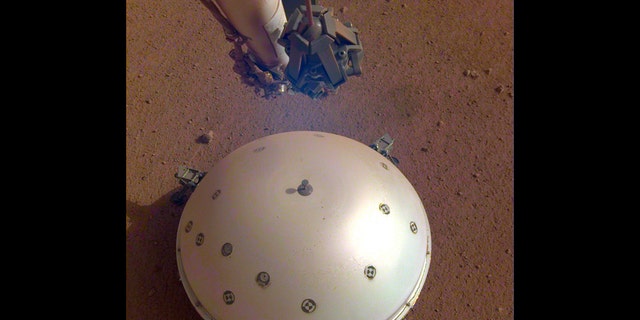The United States' circuitous road to human spaceflight self-sufficiency just took another turn.
On Saturday (April 20), a SpaceX Crew Dragon capsule experienced an anomaly during a test of its SuperDraco escape engines, which are designed to get astronauts out of harm's way in the event of a launch emergency.
Nobody was injured, but the capsule — which flew a successful uncrewed demonstration mission to the International Space Station (ISS) just last month — may have incurred serious damage.
Related: SpaceX's Crew Dragon Demo-1 Test Flight in Pictures
This particular spacecraft was scheduled to perform an in-flight abort trial this summer, an uncrewed test of those SuperDracos that will help pave the way for SpaceX's first crewed journey to the ISS for NASA. So, if this Crew Dragon cannot go, those key milestones could be pushed back significantly.
A delay would hardly be unprecedented; the timeline for launching American astronauts from American soil has shifted to the right repeatedly over the past few years.
Filling the shuttle's shoes
The United States has been unable to get people to and from orbit without help since July 2011, when NASA's space shuttle fleet retired after 30 years of service. Ever since then, NASA has bought seats aboard Russian Soyuz spacecraft, for more than $80 million apiece at current prices. (Virgin Galactic has performed two crewed spaceflights since December 2018, but that company's SpaceShipTwo is a suborbital vehicle.)
This dependence was always going to be temporary. NASA began funding commercial-crew activities in 2010, in an attempt to spur the development of private astronaut taxis that will fill the shuttle's shoes. The next year, NASA awarded a total of nearly $270 million to four companies for such work — SpaceX, Boeing, Blue Origin and Sierra Nevada.
In those early days, the stated goal was to get at least one private American crew-carrying vehicle up and running by the end of 2016.
In 2014, Boeing and SpaceX emerged from the pack with multibillion-dollar awards from NASA's Commercial Crew Program. Boeing got $4.2 billion to develop its CST-100 Starliner capsule, and SpaceX snagged $2.6 billion for Crew Dragon. At the time, NASA said the goal was to have at least one of those capsules operational by the end of 2017.
The early schedule slips occurred primarily because Congress did not allocate enough funding for commercial crew, NASA officials have said. And both Boeing and SpaceX have experienced technical issues recently, adding to the delays.
Related: Crew Dragon and Starliner: A Look at the Upcoming Astronaut Taxis
Problems on the test stand
Boeing, for example, had planned to fly an uncrewed test mission to the ISS — that company's equivalent of SpaceX's recently completed Demo-1 flight — in August 2018.
But in June of last year, a problem cropped up during a test of Starliner's launch-abort engines. Shortly thereafter, Boeing representatives announced that the company was pushing back the test mission, known as Orbital Flight Test (OFT), to late 2018 or early 2019.
OFT was soon retargeted for March 2019, then April, May and finally August. Boeing representatives attributed this latest slip to potential conflicts with another mission launching out of Florida's Cape Canaveral Air Force Station this spring; Starliner would have had just a two-day window in May to get up and out, and that was too tight for comfort.
OFT will occur after a full-on test of Starliner's launch-abort system. That "pad abort test" is scheduled to take place sometime this summer.
Boeing still aims to fly its first crewed test flight to the ISS before the end of the year, company representatives have said. Indeed, NASA's commercial-crew schedule lists "late 2019" as the current target date.
SpaceX had been aiming to launch its in-flight abort test this June. If that had gone well, a crewed demonstration mission to the ISS, known as Demo-2, could have lifted off as early as July. Those target dates will almost certainly change as a result of Saturday's anomaly, but it's too soon to speculate by how much.
"There are bound to be delays, because apparently both the capsule and the test stand were lost," said space policy expert John Logsdon, a professor emeritus of political science and international affairs at The George Washington University's Elliott School of International Affairs in Washington, D.C.
"But I think it's prudent to wait until we get a bit more information before we start talking about whether it's weeks or months or years," he told Space.com.
Part of the business
Logsdon also stressed that such setbacks aren't terribly surprising; they come with the territory of developing a new crewed spacecraft.
"We've been down this road before," he said. "You have to remind people that we had engines blowing up during shuttle development, and, clearly, we had the Apollo 1 fire."
(That fire, which took place during a launch-rehearsal test on Jan. 27, 1967, is one of NASA's biggest tragedies. It claimed the lives of astronauts Gus Grissom, Ed White and Roger Chaffee.)
NASA officials made the same point, stressing that Saturday's unfortunate event offers a chance to make Crew Dragon a better, safer vehicle.
"This is why we test," NASA chief Jim Bridenstine said in a statement. "We will learn, make the necessary adjustments and safely move forward with our Commercial Crew Program."
There's another lesson here as well — one that the Apollo 1 fire, the losses of the shuttles Challenger and Columbia and other spaceflight disasters have drilled into us.
"It's evidence that sending people into space is hard," Logsdon said. "I think it's important to take a deep breath, assess what actually happened and fix it, because we need to regain the ability to launch people."
Mike Wall's book about the search for alien life, "Out There" (Grand Central Publishing, 2018; illustrated by Karl Tate), is out now. Follow him on Twitter @michaeldwall. Follow us on Twitter @Spacedotcom or Facebook.
Let's block ads! (Why?)
https://www.space.com/spacex-dragon-accident-nasa-commercial-crew.html
2019-04-23 11:07:00Z
CBMiRmh0dHBzOi8vd3d3LnNwYWNlLmNvbS9zcGFjZXgtZHJhZ29uLWFjY2lkZW50LW5hc2EtY29tbWVyY2lhbC1jcmV3Lmh0bWzSAUpodHRwczovL3d3dy5zcGFjZS5jb20vYW1wL3NwYWNleC1kcmFnb24tYWNjaWRlbnQtbmFzYS1jb21tZXJjaWFsLWNyZXcuaHRtbA







